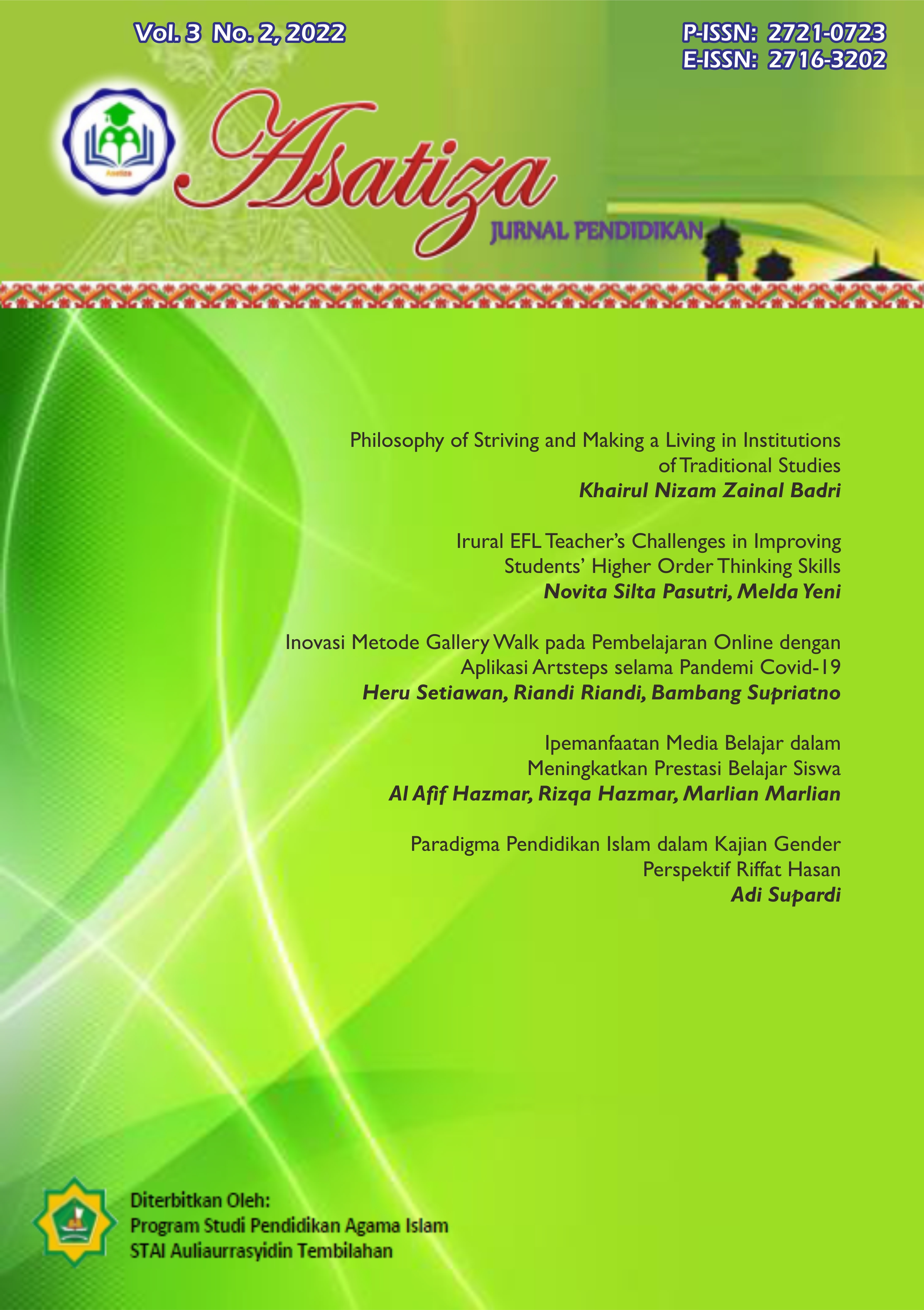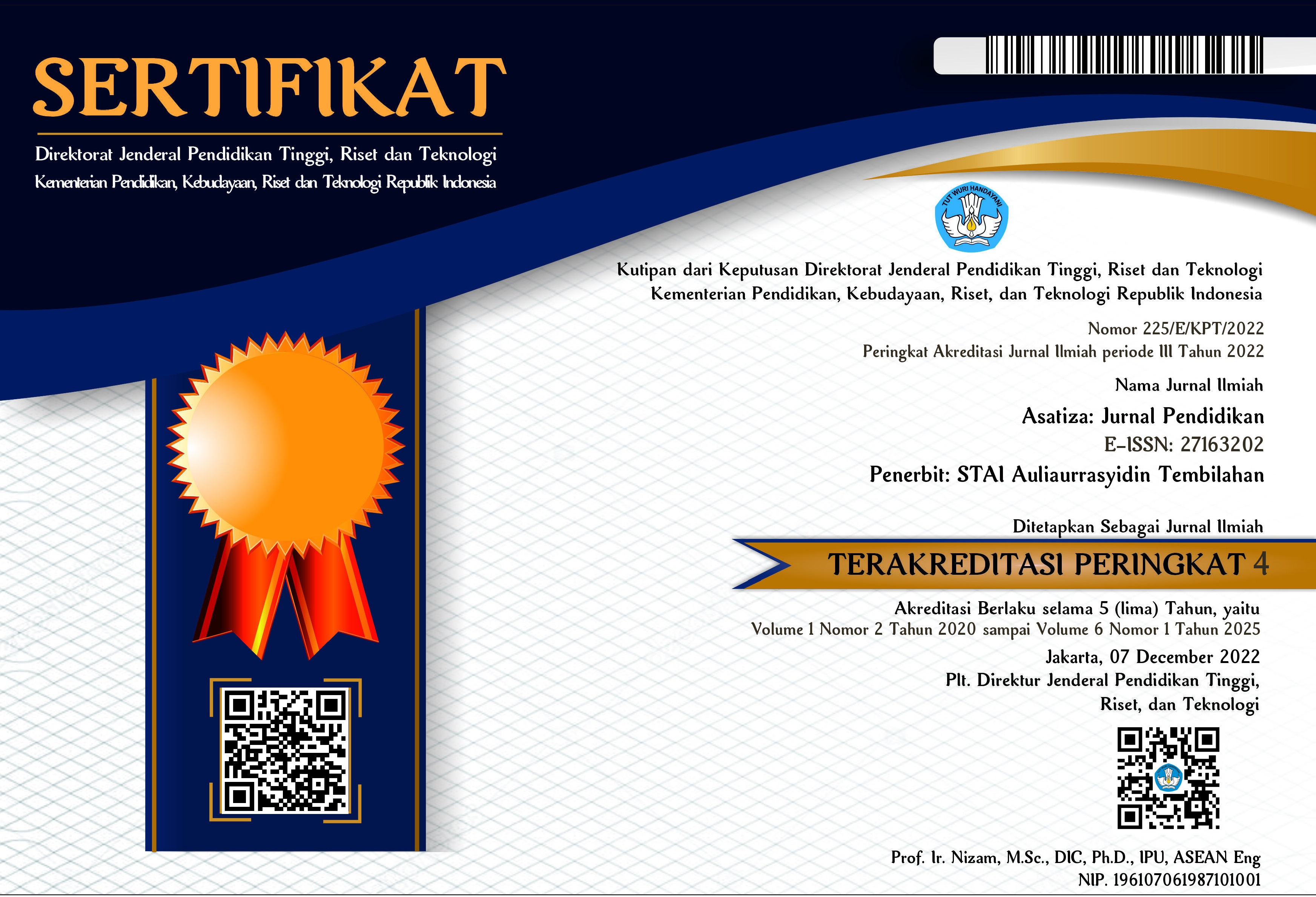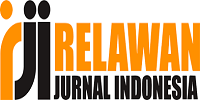Inovasi Metode Gallery Walk pada Pembelajaran Online dengan Aplikasi Artsteps selama Pandemi Covid-19
DOI:
https://doi.org/10.46963/asatiza.v3i2.526Keywords:
ArtSteps, Gallery Walk, Classification of Plant and Animals, Online LearningAbstract
The purpose of this study is to analyze students’ response of the Gallery Walk Method with the innovation of ArtSteps of Plant and Animal Classification and evaluate the obstacles in online learning during the Covid-19 pandemic. This research was conducted in grade X which consists of 15 students in Senior High School of Global Mandiri Jakarta. The instrument is the questionnaire and interviews. Based on the results of the questionnaire, we found that most students gave positive responses. More than three-quarters of students can understand the plant and animal classification material well, can express their creativity, and are more active during online learning. Students are also satisfied with their peers' presentations. According to the result of the Interview, the biggest challenge for the implementation is the internet network and the lack of real interaction with classmates. The recommendation is that students need to discuss each station for at least 15 minutes and twice in each station of Artsteps for more effectiveness.
Downloads
References
Aldeirre, D., Komala, R., & Heryanti, E. (2018). Pengaruh metode pembelajaran brainstorming terhadap kemampuan berpikir kritis materi vertebrata pada siswa SMA. Florea : Jurnal Biologi dan Pembelajarannya, 5(2), 110. https://doi.org/10.25273/florea.v5i2.3451
Anazifa, R. D. (2022). The role of technology in biology teaching during and post pandemic era. In 5th International Conference on Current Issues in Education (ICCIE 2021) (pp. 46-51). Atlantis Press.
Bryman, A. (2016). Social research methods. Oxford: Oxford university press.
Chamany, K., Allen, D., & Tanner, K. (2008). Making Biology Learning Relevant to Students: Integrating People, History, and Context into College Biology Teaching. CBE—Life Sciences Education, 7(3). 267-278. https://doi.org/10.1187/cbe.08-06-0029
Chien, Y. C., Su, Y. N., Wu, T. T., & Huang, Y. M. (2019). Enhancing students’ botanical learning by using augmented reality. Universal Access in the Information Society, 18(2), 231–241. https://doi.org/10.1007/s10209-017-0590-4
Chin, C. K. K. K. H. T. T. K. (2015). Biology Education and Research in a Changing Planet. In E. Gnanamalar Sarojini Daniel (Ed.), Is Gallery Walk an Effective Teaching and Learning Strategy for Biology? Springer Singapore. https://doi.org/10.1007/978-981-287-524-2
Creswell, J. (2008). Educational research: Planning, Conducting and Evaluating Quantitative and Qualitative Research (3rd ed.). Upper Saddle River, NJ: Pearson Prentice Hall.
Dengo, F., Negeri, M., & Gorontalo, K. (2018). Penerapan metode gallery walk dalam meningkatkan hasil belajar peserta didik pada pembelajaran IPA. Tadbir : Jurnal Manajemen Pendidikan Islam, 6(1). 40-52. https://journal.iaingorontalo.ac.id/index.php/tjmpi/article/view/505
Ewell, S. N., Cotner, S., Drake, A. G., Fagbodun, S., Google, A., Robinson, L., Soneral, P., & Ballen, C. J. (2022). Eight recommendations to promote effective study habits for biology students enrolled in online courses. Journal of Microbiology & Biology Education, 23(1). https://doi.org/10.1128/jmbe.00260-21
Fernández-González, C., & Franco-Mariscal, A. J. (2021). Teaching the plant kingdom using cooperative learning and plants elements: A case study with spanish secondary school students. Journal of Turkish Science Education, 18(1), 17–31. https://doi.org/10.36681/tused.2021.50
Kurniasari, E. F., & Setyaningtyas, E. W. (2017). Peningkatan hasil belajar IPS melalui penerapan model pembelajaran kooperatif tipe think pair and share (TPS) dengan teknik gallery walk. Journal of Education Research and Evaluation, 1(2), 120-127. https://doi.org/10.23887/jere.v1i2.10074
Handayani, A., & Koeswanti, H. D. (2021). Meta-Analisis model pembelajaran problem based learning (PBL) untuk meningkatkan kemampuan berpikir kreatif. Jurnal Basicedu, 5(3), 1349–1355. https://doi.org/10.31004/basicedu.v5i3.924
Hanina, P., Faiz, A., & Yuningsih, D. (2021). Upaya guru dalam mengatasi kejenuhan belajar peserta didik di masa pandemi. Jurnal Basicedu, 5(5), 3791–3798. https://doi.org/10.31004/basicedu.v5i5.1402
Humphrey, E. A., & Wiles, J. R. (2021). Lessons learned through listening to biology students during a transition to online learning in the wake of the COVID-19 pandemic. Ecology and Evolution, 11(8), 3450–3458. https://doi.org/10.1002/ece3.7303
Khasanah, U., Purwati, O., & Munir, A. (2019). The Use of gallery walk in teaching descriptive text to promote higher order thinking skills for 7th graders. IJET (Indonesian Journal of English Teaching), 8(1), 81–89. https://doi.org/10.15642/IJET2.2019.8.1.81-89
Knight, J. K., & Wood, W. B. (2005). Teaching more by lecturing less. Knight, J. K., & Wood, W. B. (2005). Teaching more by lecturing less. Cell biology education, 4(4), 298–310. https://doi.org/10.1187/05-06-0082
Makmun, M., Yin, K. Y., & Zakariya, Z. (2020). The gallery walk teaching and learning and its potential impact on students’ interest and performance. International Business Education Journal, 13(1), 17–22. https://doi.org/10.37134/ibej.vol13.1.2.2020
Maxwell, J. A. (2012). Qualitative Research Design: An Interactive Approach. London: Sage publications.
Meishanti, O. P. Y. (2020). Analisis keterlaksanaan praktikum biologi terhadap hasil belajar psikomotor peserta didik kelas XI IPA di MA Al Ihsan Tembelang Jombang. Eduscope: Jurnal Pendidikan, Pembelajaran, dan Teknologi, 6(1), 24-31. https://doi.org/10.32764/eduscope.v6i1.874
Nomsoor, M. M., Bello, G., & Mohammed, S. M. (2021). Effects of gallery walk instructional strategy on senior school students’ achievement in cell division in Ilorin, Nigeria. Journal of Biology Education, 4(2), 109-123. http://dx.doi.org/10.21043/jobe.v4i2.10816
Namaziandost, E., Esfahani, F. R., Nasri, M., & Mirshekaran, R. (2018). The effect of gallery walk technique on pre-intermediate EFL learners’ speaking skill. Language Teaching Research Quarterly, 8, 1-15. https://ssrn.com/abstract=3469849
Ningsih, T. F., Bahtiar, H., & Putra, Y. K. (2022). Pengembangan media pembelajaran interaktif berbasis flash pada materi klasifikasi hewan vertebrata mata pelajaran biologi kelas VII SMP. Infotek : Jurnal Informatika Dan Teknologi, 5(1), 30–41. https://doi.org/10.29408/jit.v5i1.4388
Rabgay, T. (2018). The effect of using cooperative learning method on tenth grade students’ learning achievement and attitude towards biology. International Journal of Instruction, 11(2), 265–280. https://doi.org/10.12973/iji.2018.11218a
Rachmawati, R. C., & Nurwahyunani, A. (2018). Pengembangan media pembelajaran keanekaragaman hewan berbasis game-offline pada mahasiswa calon guru pendidikan biologi Universitas PGRI Semarang. PSEJ (Pancasakti Science Education Journal), 3(1), 9-17.
Rahmat, I., & Chanunan, S. (2018). Open Inquiry in Facilitating Metacognitive Skills on High School Biology Learning: An Inquiry on Low and High Academic Ability. International Journal of Instruction, 11(4), 593-606. https://eric.ed.gov/?id=EJ1191720
Rakhmayanti, R., Hindriana, A. F., & Handayani, H. (2018). Penerapan metode gallery walk terhadap kreativitas siswa pada materi pencemaran lingkungan di kelas X SMA Negeri 1 Gegesik. Quagga: Jurnal Pendidikan dan Biologi, 10(2), 19-24. https://doi.org/10.25134/quagga.v10i2.1252
Ridwan, M. (2019). Gallery Walk; An alternative learning strategy in increasing students’ active learning. Nady Al-Adab: Jurnal Bahasa Arab, 49-63. https://doi.org/10.20956/jna.v16i1.6662
Robson, C., & McCartan, K. (2016). Real World Research. New York: John Wiley & Sons.
Downloads
Published
Issue
Section
License
Authors who publish with this journal agree to the following terms:
1. Copyright on any article is retained by the author(s).
2. The author grants the journal, right of first publication with the work simultaneously licensed under a Creative Commons Attribution shareAlike 4.0 International License that allows others to share the work with an acknowledgment of the work’s authorship and initial publication in this journal.
3. Authors are able to enter into separate, additional contractual arrangements for the non-exclusive distribution of the journal’s published version of the work (e.g., post it to an institutional repository or publish it in a book), with an acknowledgment of its initial publication in this journal.
4. Authors are permitted and encouraged to post their work online (e.g., in institutional repositories or on their website) prior to and during the submission process, as it can lead to productive exchanges, as well as earlier and greater citation of published work.
5. The article and any associated published material is distributed under the Creative Commons Attribution-ShareAlike 4.0 International License











2.png)



